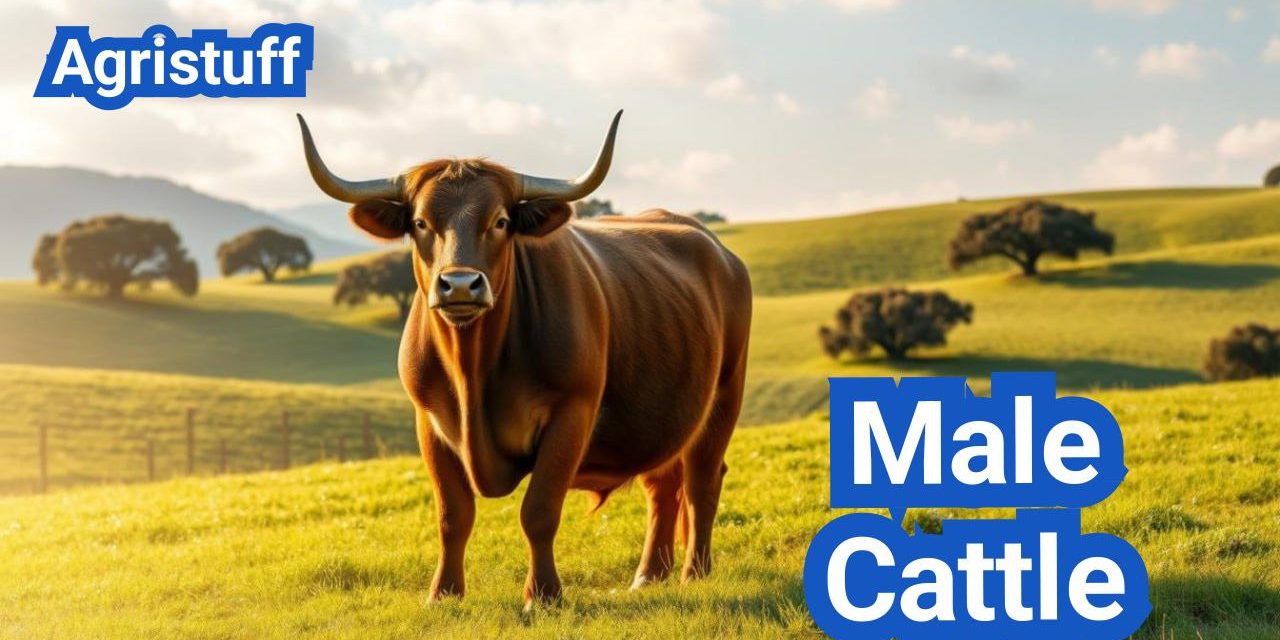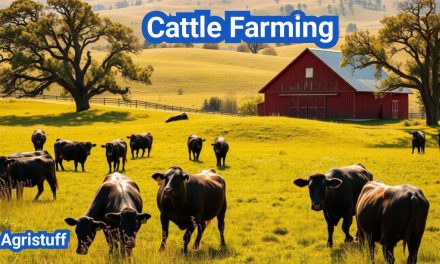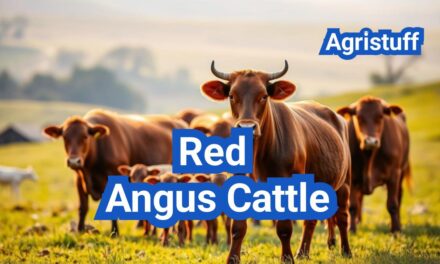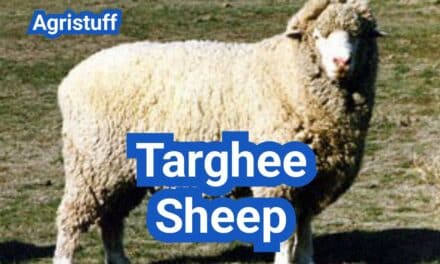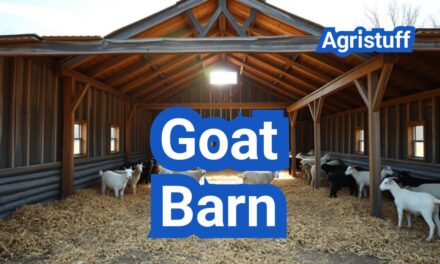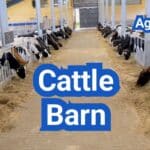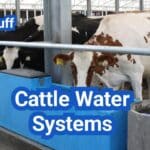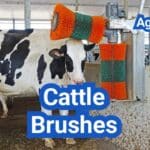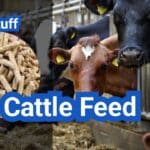Domesticated bovines have been a cornerstone of agriculture for centuries, providing meat, dairy, and labor. Male bovines play a crucial role in this context, serving purposes that range from breeding to beef production.
The significance of male bovines in agriculture cannot be overstated. They are used for draft purposes, contributing to farm work, and are central to cattle breeding programs. Understanding the different breeds, roles, and related terminology is essential for effective cattle management.
Key Takeaways
- Understanding the role of male bovines in agriculture.
- Exploring the various breeds used for different purposes.
- Familiarizing with terminology related to cattle breeding and management.
- The importance of male bovines in beef production.
- Effective cattle management practices.
Understanding Male Cattle Biology
Understanding the biology of male cattle involves examining the sexual dimorphism present in bovines and the physical traits of bulls versus steers. Male cattle, including both bulls and steers, play crucial roles in agriculture, with their biological characteristics influencing their use in breeding, meat production, and labor.
Sexual Dimorphism in Bovines
Sexual dimorphism refers to the physical differences between males and females of the same species. In bovines, males are generally larger and more muscular than females. This dimorphism is largely driven by the presence of sex hormones, particularly testosterone in males, which promotes muscle growth and development.
The differences between male and female cattle are not limited to size and muscle mass. Males also tend to have more pronounced secondary sexual characteristics, such as a more developed crest and larger horns in some breeds.
Physical Characteristics of Bulls vs. Steers
Bulls, being intact males, retain their reproductive capabilities and exhibit more pronounced male characteristics due to higher levels of testosterone. Steers, on the other hand, are castrated males, which results in reduced testosterone levels, affecting their physical development and behavior.
The physical characteristics of bulls versus steers can be summarized as follows:
| Characteristic | Bulls | Steers |
|---|---|---|
| Muscle Mass | More muscular due to higher testosterone | Less muscular, with fat distribution more typical of females |
| Behavior | More aggressive, especially towards other males | Generally more docile |
| Hormone Levels | Higher testosterone levels | Lower testosterone levels due to castration |
| Use in Agriculture | Primarily for breeding | Often raised for beef production |
These differences in physical characteristics and behavior between bulls and steers are critical in determining their roles in agricultural practices. Understanding these biological aspects is essential for effective cattle management.
Male Cattle Terminology Guide

Understanding male cattle terminology is crucial for anyone involved in the livestock industry. The various terms used to describe male cattle are based on factors such as age, sex, and condition, and understanding these classifications is essential for effective cattle management.
Bulls: Intact Male Cattle
A bull is an intact male cattle, meaning it has not been castrated. Bulls are primarily used for breeding purposes due to their ability to sire offspring. The term “bull” is often associated with strength and masculinity, reflecting their role in the cattle industry.
Steers: Castrated Male Cattle
Steers are male cattle that have been castrated, typically at a young age. Castration is performed to reduce aggression and improve the quality of the meat. Steers are commonly raised for beef production, as they tend to grow faster and have more tender meat compared to bulls.
Oxen: Working Male Cattle
Oxen are castrated male cattle trained for draft purposes, such as plowing fields or pulling carts. Oxen have been used throughout history as working animals, leveraging their strength for various agricultural tasks. The term “oxen” is often used interchangeably with “ox,” referring to a single animal.
Age-Based Classifications
Male cattle are also classified based on their age. For instance, a calf refers to a young male cattle in its early stages of development. As they mature, they may be referred to as yearlings until they reach adulthood. Understanding these age-based classifications is vital for managing cattle effectively.
In conclusion, familiarizing oneself with male cattle terminology is essential for navigating the complexities of the cattle industry. Whether you’re dealing with bulls, steers, or oxen, understanding the specific roles and characteristics of each is crucial for successful cattle management.
The Life Cycle of Male Cattle
Understanding the life cycle of male cattle is crucial for effective cattle management. Male cattle go through various growth stages from birth to maturity, and recognizing these stages is essential for optimizing their development and productivity.
Birth and Early Development
Male cattle are born after a gestation period of approximately 280-290 days. At birth, calves are vulnerable and require careful management to ensure their health and survival. Early development stages are critical, with calves relying on their mother’s milk for nutrition. Colostrum intake is vital in the first few days of life to provide essential antibodies.
As they grow, calves begin to transition to solid foods, and their diet is gradually supplemented with high-quality feed to support their rapid growth and development.
Growth Stages and Milestones
The growth stages of male cattle include the neonatal stage, weaning, backgrounding, and finishing. Each stage has distinct characteristics and nutritional requirements. During weaning, calves are separated from their mothers and introduced to a diet of solid foods. Backgrounding involves growing the cattle on a roughage-based diet, while finishing involves feeding a high-energy diet to promote rapid weight gain.
Key milestones include reaching certain weights and ages, such as being weaned at around 6-10 months and achieving market weight between 12-24 months. Monitoring these milestones helps farmers manage their cattle effectively.
Maturity and Productive Lifespan
Male cattle reach maturity at different ages depending on breed and management practices. Breeding bulls typically reach maturity between 12-18 months, while steers are usually slaughtered between 12-24 months for beef production. The productive lifespan of male cattle varies; breeding bulls may be used for 5-7 years, while steers are raised specifically for meat.
Effective management during these stages is crucial for maximizing productivity and profitability. This includes providing appropriate nutrition, healthcare, and handling practices tailored to the specific needs of male cattle at different stages of their life cycle.
Primary Roles of Male Cattle in Agriculture

The versatility of male cattle makes them invaluable in agriculture, where they are used for breeding, raising for meat, as draft animals, and in exhibitions. Their contributions are multifaceted, impacting various aspects of agricultural productivity and economy.
Breeding Stock: Bull Management
Male cattle, particularly bulls, play a crucial role in breeding programs. Effective bull management is essential for the success of cattle breeding operations. This includes selecting high-quality breeding bulls with desirable genetic traits, managing their health, and ensuring their fertility.
Key considerations in bull management:
- Genetic trait evaluation
- Physical assessment
- Fertility testing
- Nutritional management
Meat Production: Steer Raising
Steers, being castrated male cattle, are primarily raised for meat production. Steer raising is a significant aspect of the beef industry, with practices varying depending on factors like breed, feed type, and market requirements.
| Growth Stage | Nutritional Requirements | Management Practices |
|---|---|---|
| Calfhood | High-quality milk or starter feed | Vaccination, parasite control |
| Growing phase | Forage-based diet with supplements | Monitoring growth rates, health checks |
| Finishing phase | Energy-rich diet for marbling | Feed efficiency monitoring, health management |
Draft Animals: Training and Use
Male cattle, especially oxen, have been used historically as draft animals. Training involves teaching them to respond to commands and work in harness. Their use is still prevalent in some parts of the world where mechanization is limited.
The benefits of using draft cattle include:
- Sustainability
- Low initial investment
- Flexibility in terrain
Show and Exhibition Cattle
Male cattle are also showcased in agricultural exhibitions and cattle shows, where they are judged on breed characteristics, conformation, and overall quality. These events promote genetic improvement and provide a platform for breeders to showcase their animals.
The diverse roles of male cattle underscore their importance in agriculture, contributing to the sector’s productivity, diversity, and economic viability.
How to Identify Different Types of Male Cattle
Identifying different types of male cattle is crucial for effective livestock management. Accurate identification is key to making informed decisions in cattle farming, whether for breeding, meat production, or draft purposes.
Visual Identification Methods
Visual identification of male cattle involves observing their physical characteristics. Bulls, or intact males, typically have a more muscular build and a prominent scrotum. In contrast, steers, or castrated males, lack these characteristics and often have a more docile appearance.
- Observe the presence or absence of testicles to determine if an animal is a bull or a steer.
- Note the overall body size and musculature, as bulls tend to be larger and more muscular.
- Look for signs of castration, such as a scar or a less developed secondary sexual characteristics.
Behavioral Differences
Behavioral observations can also aid in identifying male cattle. Bulls are known for their aggressive behavior, especially during mating seasons, while steers are generally more docile.
“Bulls exhibit dominance behaviors such as bellowing, pawing the ground, and displaying aggressive posturing towards other males.”
Understanding these behavioral cues can help in managing and identifying male cattle effectively.
Practical Field Identification Tips
In the field, identifying male cattle requires a combination of visual inspection and understanding their behavior. Here are some practical tips:
- Always approach cattle calmly to avoid stressing them.
- Use visual barriers or enclosures to safely inspect the animals.
- Observe the cattle from a distance initially to note any behavioral patterns.
By following these guidelines, farmers and ranchers can improve their ability to identify different types of male cattle, enhancing overall livestock management.
Castration of Male Cattle: Methods and Management
The castration of male cattle is a common agricultural practice that serves multiple purposes, including improving meat quality and managing animal behavior. This procedure is pivotal in the cattle industry, affecting various aspects of cattle management and production.
Reasons for Castration
Castration is primarily performed to enhance the quality of meat and to reduce aggression in male cattle, making them easier to handle. It also prevents unwanted breeding and can improve the overall efficiency of cattle operations.
- Improves meat quality by reducing the likelihood of undesirable characteristics associated with intact males.
- Reduces aggression, making the animals safer to handle.
- Prevents unwanted breeding, helping to manage the cattle population more effectively.
Traditional and Modern Castration Techniques
There are several methods used for castrating male cattle, ranging from traditional surgical techniques to more modern, non-surgical approaches.
| Method | Description | Advantages | Disadvantages |
|---|---|---|---|
| Surgical Castration | Involves surgically removing the testicles. | Effective, can be performed with basic equipment. | Risk of infection, requires skilled personnel. |
| Band Castration | Uses a rubber band to restrict blood flow to the testicles. | Less invasive, reduces risk of infection. | Can be painful for the animal if not done correctly. |
Post-Castration Care
Proper care after castration is crucial to prevent complications and ensure the animal recovers smoothly.
“Post-castration care involves monitoring for signs of infection, providing a clean environment, and ensuring the animal receives adequate nutrition and rest.” – Expert in Cattle Management
Key aspects of post-castration care include:
- Monitoring for signs of infection or complications.
- Maintaining a clean environment to reduce the risk of infection.
- Ensuring adequate nutrition and hydration.
Timing Considerations
The timing of castration can significantly impact its effectiveness and the animal’s response to the procedure.
Factors to consider when deciding on the timing of castration include:
- The age and size of the animal.
- The purpose of the animal (e.g., for breeding, meat production).
- Seasonal considerations and farm management practices.
Castrating at a younger age can reduce stress and complications, but the optimal timing may vary depending on the specific circumstances of the farm or operation.
Popular Beef Male Cattle Breeds

Several male cattle breeds are prominent in beef production due to their unique characteristics. These breeds have been developed over centuries to excel in various environments and production systems.
Angus Bulls and Steers
Angus cattle are one of the most popular beef breeds globally, known for their high-quality meat and marbling ability. Angus bulls are prized for their genetics, which they pass on to their offspring, improving the quality of the herd. Angus steers are often used in feedlots due to their efficient growth rate and desirable carcass characteristics.
“Angus cattle have become the gold standard for beef quality, with their marbling and tenderness making them a favorite among consumers and producers alike.”
Hereford Male Cattle
Hereford cattle are another well-established breed in the beef industry, recognized for their hardiness and efficiency. Hereford bulls are known for their calm temperament and are often used in crossbreeding programs to improve the vigor of the resulting calves. Hereford steers are valued for their growth rate and carcass quality.
Charolais and Limousin Males
Charolais cattle and Limousin breeds are known for their muscular development and lean meat production. Charolais bulls are used to improve the muscling of crossbred calves, while Limousin bulls are prized for their ability to sire calves with exceptional carcass characteristics. Both breeds are popular in beef production systems that focus on lean meat.
Brahman and Tropical Breeds
Brahman cattle and other tropical breeds are adapted to hot, humid climates and are often used in regions where heat tolerance is crucial. Brahman bulls are known for their hardiness and are used in crossbreeding programs to impart heat tolerance to their offspring. These breeds play a vital role in beef production in tropical and subtropical regions.
The selection of a particular breed or crossbreed depends on various factors, including climate, production system, and market requirements. Understanding the characteristics of these popular beef male cattle breeds is essential for making informed decisions in beef production.
Male Dairy Cattle Management

Effective management of male dairy cattle is crucial for the success of dairy farming operations. Male dairy calves are often raised for veal or used in crossbreeding programs, making their management a significant aspect of dairy farming.
Holstein Male Calves: Challenges and Opportunities
Holstein male calves present both challenges and opportunities for dairy farmers. On one hand, they can be raised for veal, providing an early income stream. On the other hand, their management requires careful consideration of nutrition, health, and welfare. Proper care from birth is essential to ensure the health and quality of these calves.
Jersey Male Cattle Characteristics
Jersey male cattle are known for their hardiness and vigor. They are often used in crossbreeding programs to improve the fertility and hardiness of the dairy herd. Understanding the characteristics of Jersey males is crucial for making informed breeding decisions.
Economic Considerations for Male Dairy Calves
The economic viability of raising male dairy calves depends on several factors, including market demand for veal, the cost of feed, and the potential for crossbreeding. Dairy farmers must carefully consider these factors to maximize their returns. Efficient management practices can significantly impact the profitability of male dairy calf rearing.
Crossbreeding Strategies
Crossbreeding is a common practice in dairy farming, used to improve the genetic diversity and productivity of the herd. Male dairy cattle from breeds like Holstein and Jersey can be used in crossbreeding programs. Selecting the right breed and managing the crossbreeding process effectively are key to achieving the desired outcomes.
By understanding the challenges and opportunities associated with male dairy cattle, dairy farmers can make informed decisions to improve their operations. Effective management of male dairy cattle is integral to the overall success of dairy farming.
Heritage and Specialty Male Cattle Breeds

The world of cattle includes a diverse range of heritage and specialty male breeds that are valued for their distinct traits. These breeds have been preserved through conservation efforts and are recognized for their historical significance and unique characteristics.
Highland Cattle Males
Highland cattle are known for their hardiness and distinctive appearance. Male Highland cattle are particularly valued for their robust nature and the quality of their meat.
Key Characteristics of Highland Cattle Males:
- Thick coats for harsh weather resistance
- Robust build and strong constitution
- High-quality beef production
Texas Longhorn Bulls
Texas Longhorn bulls are iconic for their large horns and hardy nature. They are a symbol of the American West and are prized for their strength and fertility.
Notable Traits of Texas Longhorn Bulls:
- Large, distinctive horns
- Strong, muscular build
- High fertility rates
Rare and Conservation Breeds
Several male cattle breeds are considered rare and are the focus of conservation efforts. These breeds are important for maintaining genetic diversity within the cattle population.
| Breed | Characteristics | Conservation Status |
|---|---|---|
| Highland | Hardy, high-quality beef | Recovering |
| Texas Longhorn | Large horns, strong build | Vulnerable |
| Pineywoods | Heat tolerance, foraging ability | Critical |
Conservation efforts are crucial for preserving these heritage and specialty breeds. By supporting conservation programs, farmers and ranchers can help ensure the survival of these unique male cattle breeds.
How to Select a Breeding Bull

Breeding bull selection is a nuanced process that requires a thorough understanding of genetics, physical characteristics, and temperament. The right breeding bull can significantly enhance the genetic quality and productivity of a cattle herd.
Genetic Trait Evaluation
When evaluating genetic traits, consider the breed’s characteristics and the production goals of your operation. Key traits include growth rate, milk production potential, and disease resistance. Utilize Expected Progeny Differences (EPDs) to make informed decisions.
EPDs are numerical values that predict a bull’s genetic potential for various traits. For instance, a bull with a high EPD for weaning weight is likely to sire calves that grow well.
| Trait | EPD Value | Interpretation |
|---|---|---|
| Birth Weight | +2.0 | Above average |
| Weaning Weight | +30 | Significantly above average |
| Yearling Weight | +60 | High growth potential |
Physical Assessment Techniques
A thorough physical assessment is crucial when selecting a breeding bull. Evaluate the bull’s overall conformation, looking for structural correctness and breed-specific characteristics.
Key areas to assess include:
- Hoof and leg soundness
- Testicular development and scrotal circumference
- Body condition and muscling
Fertility Testing Methods
Fertility is a critical factor in breeding bull selection. Conduct a breeding soundness examination (BSE) to assess the bull’s reproductive potential.
A BSE includes:
- Physical examination of the reproductive tract
- Evaluation of semen quality
- Measurement of scrotal circumference
“A breeding soundness examination is essential for identifying potential fertility issues in bulls.”
Dr. John Smith, Cattle Breeding Expert
Temperament and Handling Evaluation
A bull’s temperament can significantly impact its suitability for breeding. Assess the bull’s behavior and docility to ensure it can be handled safely.
Consider the following when evaluating temperament:
- Reaction to handling and restraint
- Aggression towards humans or other animals
- Overall demeanor in various situations
By carefully evaluating genetic traits, physical characteristics, fertility, and temperament, you can select a breeding bull that enhances the quality and productivity of your cattle herd.
Bull Management on the Farm

Managing breeding bulls on the farm requires careful consideration of several factors to ensure their health and productivity. Effective bull management is crucial for the success of cattle farming operations.
Housing and Facility Requirements
Breeding bulls need adequate housing and facilities that provide protection from the elements and sufficient space to move. The facilities should be designed to minimize the risk of injury to both the bulls and the handlers.
- Provide sturdy fencing to prevent escape and injury.
- Ensure adequate shelter from extreme weather conditions.
- Maintain clean and dry living conditions.
Nutrition for Breeding Bulls
A well-balanced diet is essential for maintaining the health and fertility of breeding bulls. Nutritional needs may vary depending on factors such as age, breed, and stage of production.
“A breeding bull’s nutritional needs are critical to its reproductive performance. Ensuring adequate nutrition is key to maintaining fertility and overall health.”
Nutritional requirements include:
- Adequate protein for muscle maintenance and overall health.
- Sufficient energy to support daily activities and reproductive functions.
- Essential minerals and vitamins for overall well-being.
Bull-to-Cow Ratios for Breeding
The ratio of bulls to cows is a critical factor in breeding programs. The ideal ratio can vary based on factors such as the age and experience of the bull, as well as the breed and condition of the cows.
A common recommendation is to maintain a bull-to-cow ratio of 1:25 to 1:30 for mature bulls under typical pasture conditions. However, this ratio may need to be adjusted based on specific farm conditions and breeding objectives.
Safety Protocols for Handlers
Working with breeding bulls can be hazardous, and handlers need to follow strict safety protocols to minimize the risk of injury.
- Handlers should be experienced and trained in handling bulls.
- Use appropriate equipment, such as halters and chutes, when handling bulls.
- Maintain a safe distance when bulls are in aggressive or unpredictable moods.
By following these guidelines, cattle farmers can ensure the health and productivity of their breeding bulls while maintaining a safe working environment.
Raising Male Cattle for Beef Production

Optimizing the growth of male cattle for beef production requires a comprehensive approach that includes nutrition, health management, and finishing methods. Effective beef production involves understanding the nutritional needs of male cattle at different stages of their growth.
Nutritional Requirements by Growth Stage
Male cattle have different nutritional requirements at various stages of their growth. For instance, during the weaning stage, calves require a diet rich in protein and energy to support their development.
The nutritional needs change as they grow into yearlings and eventually become finishing cattle. A well-planned nutrition strategy ensures that the cattle achieve optimal growth rates and quality.
| Growth Stage | Nutritional Requirements | Feeding Strategy |
|---|---|---|
| Weaning Stage | High protein, high energy | Creep feeding, high-quality hay |
| Yearling Stage | Moderate protein, high energy | Backgrounding on pasture or feedlot |
| Finishing Stage | High energy, balanced protein | Feedlot finishing with grain |
Feed Efficiency and Weight Gain
Improving feed efficiency is crucial for cost-effective beef production. This involves selecting breeds and genetics that are known for their feed efficiency and implementing feeding strategies that optimize weight gain.
Feed efficiency can be enhanced by providing a balanced diet that meets the nutritional needs of the cattle, minimizing waste, and ensuring that the cattle are healthy.
Finishing Methods for Market
The finishing stage is critical in determining the quality and characteristics of the beef. Different finishing methods, such as grain finishing or grass finishing, can significantly impact the final product.
Producers must choose a finishing method that aligns with their market requirements and production capabilities.
Quality Grade Factors
Several factors contribute to the quality grade of beef, including marbling, maturity, and muscling. Understanding these factors helps producers manage their cattle to achieve the desired quality grade.
Marbling, in particular, is a key factor in determining the quality grade, as it affects the tenderness, flavor, and overall palatability of the beef.
By focusing on these aspects, producers can improve the quality and value of their beef products.
Health Management for Male Cattle
Effective health management is crucial for male cattle to ensure their overall well-being and productivity. Male cattle, whether used for breeding, meat production, or draft purposes, require diligent health management to prevent and treat various health issues.
Common Health Issues in Bulls
Bulls are susceptible to specific health issues, including reproductive problems. Reproductive health is critical in breeding bulls, as any issues can significantly impact fertility and the overall success of breeding programs.
- Injuries from fighting or accidents
- Infectious diseases such as bovine viral diarrhea (BVD)
- Reproductive issues, including testicular problems
Steer-Specific Health Concerns
Steers, being castrated male cattle, have different health concerns compared to bulls. Common issues include:
- Respiratory diseases
- Parasitic infections
- Nutritional deficiencies
Preventative care is essential to mitigate these risks and ensure the health and well-being of steers.
Preventative Care Protocols
Implementing preventative care protocols is vital for maintaining the health of male cattle. This includes:
- Regular vaccinations
- Parasite control measures
- Proper nutrition and feeding practices
A well-structured health program can significantly reduce the incidence of disease and improve overall herd health.
Reproductive Health in Breeding Bulls
The reproductive health of breeding bulls is of paramount importance. Regular fertility testing and monitoring can help identify any potential issues early on, ensuring that bulls remain fertile and capable of performing their breeding role effectively.
“The fertility of a bull is a critical factor in the success of a breeding program. Regular assessment and maintenance of reproductive health are essential.”
By focusing on these aspects of health management, cattle producers can ensure the well-being and productivity of their male cattle, ultimately contributing to the success of their farming operations.
Behavioral Management of Male Cattle
Effective management of male cattle requires a deep understanding of their behavior. Male cattle, including bulls and steers, exhibit unique behavioral patterns that are crucial for their handling and management.
Understanding Bull Behavior
Bulls are known for their strength and sometimes aggressive behavior, particularly during breeding seasons. Understanding bull behavior is vital for safe handling and management. Bulls are naturally protective and can be territorial, making it essential to approach them with caution.
Safe Handling Techniques
Safe handling techniques are critical when dealing with male cattle. Handlers should be aware of the animal’s body language, such as ear position and tail swishing, which can indicate agitation or aggression. Using appropriate facilities and equipment, like sturdy fences and handling chutes, can minimize the risk of injury to both handlers and animals.
Dominance Hierarchies in Bull Groups
In groups of bulls, dominance hierarchies are often established through displays of aggression and submission. Understanding these hierarchies can help in managing bulls more effectively, reducing conflicts, and ensuring a more stable social environment.
| Behavioral Trait | Description | Management Strategy |
|---|---|---|
| Aggression | Display of aggressive behavior, such as head-butting or charging. | Separate aggressive individuals, provide adequate space. |
| Submission | Display of submissive behavior, such as retreating or lowering the head. | Monitor for signs of stress, ensure adequate resources. |
| Territoriality | Defense of a particular area or territory. | Provide sufficient space, minimize changes to the environment. |
Training Methods for Working Oxen
Working oxen require specific training to perform tasks effectively and safely. Training methods include positive reinforcement techniques, such as rewarding desired behaviors with food or praise. Consistency and patience are key in training working oxen.
By understanding and applying knowledge of male cattle behavior, farmers and handlers can improve the management of these animals, enhancing both their welfare and productivity.
Economic Value and Market Considerations
Understanding the economic aspects of male cattle is crucial for producers looking to maximize their returns. The economic value of male cattle is influenced by a variety of factors, including market trends, pricing for breeding bulls, and the value of beef steers.
Pricing Factors for Breeding Bulls
The price of breeding bulls is determined by several factors, including genetic traits, physical characteristics, and fertility. Genetic trait evaluation plays a crucial role in determining the value of a breeding bull, as it directly impacts the quality of the offspring.
According to a study published in the Journal of Animal Science, the heritability of certain traits such as growth rate and carcass quality can significantly impact the pricing of breeding bulls.
“The genetic makeup of a bull can significantly influence the profitability of a cattle operation.”
| Trait | Average Price | Premium Price |
|---|---|---|
| Genetic Trait Evaluation | $2,000 | $5,000 |
| Fertility Testing | $1,500 | $3,000 |
Market Value of Beef Steers
The market value of beef steers is influenced by factors such as weight, breed, and finish. Producers need to understand these factors to maximize their returns.
Industry Trends Affecting Male Cattle
The cattle industry is subject to various trends that can impact the economic value of male cattle. These include changes in consumer demand, advancements in technology, and shifts in global market dynamics.
- Consumer demand for grass-fed beef
- Adoption of precision agriculture technologies
- Fluctuations in global grain prices
Value-Added Opportunities
Producers can explore value-added opportunities to increase the economic value of their male cattle. This can include producing specialty beef products or participating in niche markets.
For example, producers can capitalize on the growing demand for specialty beef by marketing their products directly to consumers. Value-added products such as organic or grass-fed beef can command higher prices.
Finally
Understanding male cattle is crucial for successful cattle breeding and livestock management. The various aspects of male cattle, including their biology, terminology, and roles in agriculture, have been explored in this article.
Male cattle play a vital role in beef production, and their management is essential for the livestock industry. From breeding bulls to steers raised for meat, effective cattle management practices are necessary to ensure the health and productivity of these animals.
By grasping the concepts of cattle breeding, beef production, and livestock management, farmers and livestock professionals can make informed decisions to improve their operations. The importance of proper male cattle management cannot be overstated, as it directly impacts the overall efficiency and profitability of agricultural endeavors.
As the livestock industry continues to evolve, staying informed about best practices in male cattle management will be essential for achieving success in cattle breeding and beef production.
FAQ
What is the difference between a bull and a steer?
A bull is an intact male cattle, while a steer is a castrated male cattle. Castration is typically performed to improve temperament and meat quality.
What are the primary roles of male cattle in agriculture?
Male cattle are used as breeding stock, for meat production, as draft animals, and in shows and exhibitions. They play a crucial role in cattle breeding, beef production, and cattle management.
How do you identify different types of male cattle?
Identification can be done through visual methods, observing behavioral differences, and using practical field identification tips. Understanding the physical characteristics and breed-specific traits is essential.
Why is castration performed on male cattle?
Castration is performed to improve meat quality, reduce aggression, and make handling easier. It also helps in managing the behavior of male cattle.
What are some popular breeds of male cattle used for beef production?
Popular breeds include Angus, Hereford, Charolais, Limousin, and Brahman. Each breed has its unique characteristics and advantages in beef production.
How do you select a breeding bull?
Selection involves evaluating genetic traits, physical assessment, fertility testing, and temperament evaluation. It’s crucial to choose a bull that meets the breeding program’s goals.
What are the nutritional requirements for male cattle at different growth stages?
Nutritional requirements vary by growth stage, and a balanced diet is essential for optimal growth and development. Factors such as age, breed, and production goals influence nutritional needs.
What are some common health issues in male cattle?
Common health issues include reproductive problems in bulls, respiratory issues in steers, and injuries from handling or fighting. Preventative care protocols are vital for maintaining health.
How do you manage the behavior of male cattle?
Understanding bull behavior, using safe handling techniques, recognizing dominance hierarchies, and training working oxen are key aspects of behavioral management.
What factors affect the market value of male cattle?
Pricing factors for breeding bulls, market value of beef steers, industry trends, and value-added opportunities all impact the economic value of male cattle.
What is the importance of reproductive health in breeding bulls?
Reproductive health is crucial for the fertility and breeding success of bulls. Regular fertility testing and health checks are necessary to ensure optimal reproductive performance.
How do you manage breeding bulls on the farm?
Management includes providing appropriate housing and facilities, nutrition tailored to breeding needs, maintaining optimal bull-to-cow ratios, and implementing safety protocols for handlers.
Conclusion of: Male Cattle
Male cattle play significant roles in agriculture, particularly within livestock management, breeding programs, and meat production. Understanding male cattle, their specific roles, various breeds, and terminology is crucial for efficient livestock management. This informative guide explains the essential aspects of male cattle, highlighting their roles, breeds, and common terminologies used within the farming community.
What are Male Cattle?
Male cattle, or bulls and steers, are integral to livestock farming. They are primarily used for breeding and beef production. Understanding the distinctions and terminologies related to male cattle aids in effective farm management and decision-making. Male Cattle Overview
Roles of Male Cattle
Male cattle serve specific functions in livestock farming, significantly influencing herd dynamics and productivity:
- Breeding Bulls: Used for reproductive purposes to improve genetic traits within cattle herds.
- Beef Production: Male cattle, particularly steers, are raised for beef due to their faster growth rates and desirable meat qualities.
- Draft Power: Historically, male cattle were utilized for labor, including plowing fields and transportation, although less common today. Cattle Roles in Agriculture
Breeds of Male Cattle
Various breeds of male cattle are selected based on their suitability for specific roles such as breeding or meat production:
- Angus: Preferred for breeding due to excellent genetic traits such as meat quality and adaptability.
- Hereford: Known for robustness and suitability for meat production.
- Charolais: Noted for muscle development and high-quality beef production.
- Simmental: Popular for both breeding and beef production due to their growth rate and carcass yield. Beef Breeds Information
Terminology for Male Cattle
Understanding terminology is vital for clarity in livestock management:
- Bull: A mature male cattle capable of reproduction.
- Steer: A castrated male cattle raised primarily for beef production.
- Oxen: Castrated male cattle traditionally used for draft purposes.
- Calf: A young male cattle before reaching maturity. Cattle Terminology
Breeding Management of Male Cattle
Effective breeding management practices are essential for optimizing genetic traits and herd productivity:
- Selective Breeding: Choosing males with desirable traits such as growth rates, feed efficiency, and meat quality.
- Artificial Insemination (AI): A common method of breeding involving the manual insemination of females with semen collected from select males.
- Health Checks: Regular veterinary examinations to ensure male cattle remain healthy and productive. Cattle Breeding Practices
Feeding Practices for Male Cattle
Proper feeding significantly impacts male cattle growth rates, reproductive performance, and meat quality:
- Balanced Diets: Ensuring nutritional adequacy through proper forage and supplementary feeds.
- Growth Promotion: Using feed programs designed for rapid growth and muscle development in beef cattle.
- Nutritional Supplements: Providing minerals and vitamins essential for optimal cattle health and productivity. Cattle Nutrition
Health and Welfare Management
Maintaining the health and welfare of male cattle is fundamental to farming efficiency and animal ethics:
- Routine Health Management: Implementing vaccination programs, parasite control, and regular health monitoring.
- Stress Reduction: Ensuring proper handling and transportation practices to minimize stress and maintain productivity.
- Facility Management: Providing adequate housing and environmental conditions that promote health and welfare. Cattle Welfare Guidelines
Economic Impact of Male Cattle
Male cattle significantly impact farm economics, influencing revenues, costs, and overall profitability:
- Market Pricing: Male cattle prices vary based on breed, age, health, and market demand.
- Cost Management: Efficiently managing feeding, healthcare, and management costs to maintain profitability.
- Profit Analysis: Regular economic evaluations to ensure sustainable profitability. Economics of Cattle Production
Environmental Considerations
Sustainable practices in managing male cattle can significantly reduce environmental impacts:
- Rotational Grazing: Enhancing soil health and pasture sustainability.
- Waste Management: Efficient manure management practices to minimize environmental contamination.
- Water Conservation: Implementing practices and technologies to reduce water consumption. Sustainable Livestock Practices
Final Thought
Understanding male cattle, their roles, breeds, and related terminologies is essential for efficient and sustainable livestock farming. Proper management practices ensure profitability, animal welfare, and environmental sustainability.

